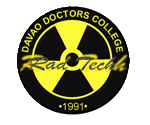Log in
Similar topics
Latest topics
» Anniversary of the Discovery of X-Rayby Admin Sat Nov 05, 2011 10:51 am
» First time members click here to join the fun
by Samjaypineda Fri Nov 04, 2011 10:40 pm
» RADICAL:THE COMIC SERIES
by muyco Tue Aug 16, 2011 1:35 pm
» EdmefoWkes
by Guest Tue Aug 02, 2011 4:52 am
» RT Day with other RT School ( s)
by Polon PearL Thu Jul 07, 2011 9:16 pm
Who is online?
In total there are 5 users online :: 0 Registered, 0 Hidden and 5 Guests None
Most users ever online was 82 on Mon May 31, 2021 1:28 pm
Finals Topic 3-2
5 posters
Page 1 of 1
 Finals Topic 3-2
Finals Topic 3-2
Topic
3: CT Scan / MRI
Computed
Tomography Scanner (CT Scan)
1970-72
– Godfrey Hounsfield – a senior research scientist [Engineer]
first demonstrated the process of the scanner.
Principles
of Operation:
Because
of the superimposition of the anatomical structures of the
conventional radiographic technique, a CT image is formed.
A CT
image is formed by scanning a cross section of the body with a narrow
beam and measure the transmitted radiation through a detector. The
detector adds all of the energy from the transmitted rays, which the
information is in numerical form and must be processed by a computer
and display the image on the monitor.
The
computer reconstruction of the cross-sectional anatomy is
accomplished with mathematic equations adapted for computer
processing called Algorithms.
Image
Characteristic:
Image
Matrix – (matrix-Array of numbers in rows and columns.)
A CT
scan image format consist of many cells, each assigned a number and
display as density or brightness level on the video monitor.
Each
cell of information is a pixel (Picture Element), and the numerical
information contained in each pixel is a CT number or Hounsfield
unit.
A pixel
is a two dimensional representation of corresponding tissue volume.
Tissue
volume is known as voxel (volume element) determined by the product
of the pixel size and thickness.
CT
numbers:
CT
numbers is the level of brightness on the photographic image as a
level of density.
Magnetic
Resonance Imaging (MRI)
An
imaging modality based on nuclear magnetic resonance (NMR)
spectroscopy.
Magnetic
Resonance Imaging is frequently called in the medical field which was
introduced in 1980’s.
It was
employed in chemistry and physics to obtain information about complex
molecules and molecular motion.
Molecule
– structure form of atoms of various elements.
The
composition of human body is the ultimate basis in atoms.
The
Person who study cell:
Robert
Hooke – Study cell and name as the basic biologic building block.
Anton
Van Leeuwenhoek – Living cell based on microscopic observation.
Schneider
& Schwann – study on plants and animals cells.
Watson &
Crick – Living cell “DNA” deoxyribonucleic s acid
Molecular
Composition of the human Body:
5
principal types
Water –
80%
Protein
– 15%
Lipids
(fats) – 2%
Carbohydrates
(sugar) – 1%
Nucleic
Acid – 1%
Other –
1%
Four (4)
of these molecules (protein, lipids, carbohydrates, nucleic acid) are
macromolecules (Very large molecules consist of thousand of atoms.
MRI
Fundamental Concepts
Felix
Bloch and Edward Purcell investigate how nuclei of materials behave
in magnetic field. They discovered that these nuclei will absorb
energy from radio waves at certain frequency. Bloch and Purcell
receives Nobel prize 1952.
The
machine provides cross-sectional, or three dimensional, images
without using x-rays or radioactive material. It produces images by
the use of a strong magnetic field and radio waves.
The
equipment use large electromagnetic coils. These coils will make
nuclei line-up and absorbs the energy carrying the information.
Why
MRI?
Best-low
contrast resolution
No
ionizing radiation
Direct
Multiplanar Imaging
No bone
or air artifacts – It produce image by bone in clear, unobstructed
detail. (Brain, Spinal Cord – nerve damage)
Direct
flow measurements
Totally
non-invasive
Only
Disadvantage: Patient with Prosthesis plates
3: CT Scan / MRI
Computed
Tomography Scanner (CT Scan)
1970-72
– Godfrey Hounsfield – a senior research scientist [Engineer]
first demonstrated the process of the scanner.
Principles
of Operation:
Because
of the superimposition of the anatomical structures of the
conventional radiographic technique, a CT image is formed.
A CT
image is formed by scanning a cross section of the body with a narrow
beam and measure the transmitted radiation through a detector. The
detector adds all of the energy from the transmitted rays, which the
information is in numerical form and must be processed by a computer
and display the image on the monitor.
The
computer reconstruction of the cross-sectional anatomy is
accomplished with mathematic equations adapted for computer
processing called Algorithms.
Image
Characteristic:
Image
Matrix – (matrix-Array of numbers in rows and columns.)
A CT
scan image format consist of many cells, each assigned a number and
display as density or brightness level on the video monitor.
Each
cell of information is a pixel (Picture Element), and the numerical
information contained in each pixel is a CT number or Hounsfield
unit.
A pixel
is a two dimensional representation of corresponding tissue volume.
Tissue
volume is known as voxel (volume element) determined by the product
of the pixel size and thickness.
CT
numbers:
CT
numbers is the level of brightness on the photographic image as a
level of density.
Magnetic
Resonance Imaging (MRI)
An
imaging modality based on nuclear magnetic resonance (NMR)
spectroscopy.
Magnetic
Resonance Imaging is frequently called in the medical field which was
introduced in 1980’s.
It was
employed in chemistry and physics to obtain information about complex
molecules and molecular motion.
Molecule
– structure form of atoms of various elements.
The
composition of human body is the ultimate basis in atoms.
The
Person who study cell:
Robert
Hooke – Study cell and name as the basic biologic building block.
Anton
Van Leeuwenhoek – Living cell based on microscopic observation.
Schneider
& Schwann – study on plants and animals cells.
Watson &
Crick – Living cell “DNA” deoxyribonucleic s acid
Molecular
Composition of the human Body:
5
principal types
Water –
80%
Protein
– 15%
Lipids
(fats) – 2%
Carbohydrates
(sugar) – 1%
Nucleic
Acid – 1%
Other –
1%
Four (4)
of these molecules (protein, lipids, carbohydrates, nucleic acid) are
macromolecules (Very large molecules consist of thousand of atoms.
MRI
Fundamental Concepts
Felix
Bloch and Edward Purcell investigate how nuclei of materials behave
in magnetic field. They discovered that these nuclei will absorb
energy from radio waves at certain frequency. Bloch and Purcell
receives Nobel prize 1952.
The
machine provides cross-sectional, or three dimensional, images
without using x-rays or radioactive material. It produces images by
the use of a strong magnetic field and radio waves.
The
equipment use large electromagnetic coils. These coils will make
nuclei line-up and absorbs the energy carrying the information.
Why
MRI?
Best-low
contrast resolution
No
ionizing radiation
Direct
Multiplanar Imaging
No bone
or air artifacts – It produce image by bone in clear, unobstructed
detail. (Brain, Spinal Cord – nerve damage)
Direct
flow measurements
Totally
non-invasive
Only
Disadvantage: Patient with Prosthesis plates

Joshua- Posts : 9
Join date : 2009-08-19
Age : 45
 Re: Finals Topic 3-2
Re: Finals Topic 3-2
 bago ba ito?? ahmf. . .wala ko e2 na copy. . .
bago ba ito?? ahmf. . .wala ko e2 na copy. . . 
saxons- Posts : 29
Join date : 2009-09-17
 Re: Finals Topic 3-2
Re: Finals Topic 3-2
Ito Na
Ung Last
 Topic Natin SiR??
Topic Natin SiR?? 
merry Christmas
sir!!
Ung Last
merry Christmas
sir!!

renien- Posts : 9
Join date : 2009-09-15
 Re: Finals Topic 3-2
Re: Finals Topic 3-2
ahahahaha
nag merry christmas na szi yen`yen
ataii
sayu pah m yen !
naa pah 70 daysz
NAKSZZZZ .....









nag merry christmas na szi yen`yen

ataii

sayu pah m yen !
naa pah 70 daysz
NAKSZZZZ .....

mhimaii- Posts : 40
Join date : 2009-09-14
Page 1 of 1
Permissions in this forum:
You cannot reply to topics in this forum